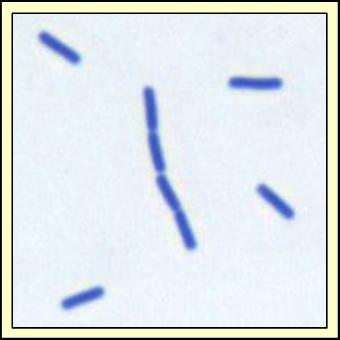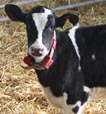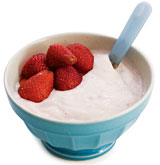Edinburgh/Yoghurt
From 2007.igem.org
| Line 4: | Line 4: | ||
---- | ---- | ||
| + | {|{| border="1" cellpadding="20" cellspacing="0" style="background:#ddcef2 border:#afa3bf" | ||
| + | |- | ||
| + | |<big>''Welcome to the self-flavouring yogurt project!''</big> | ||
| + | |- | ||
| - | <big> | + | |<big>The aim of this project is not only to produce colourful, tasty yoghurt, but to demostrate that it is possible to successfully introduce BioBricks into gram positive organisms.</big> |
| + | |- | ||
| - | + | |We chose to produce 'self-flavouring' yoghurt, as this project enables us to genetically manipulate a range of gram positive bacteria required for yoghurt formation (see yoghurt production, below). | |
| - | + | ||
| - | + | ||
| - | + | ||
| - | We chose to produce 'self-flavouring' yoghurt, as this project enables us to genetically manipulate a range of gram positive bacteria required for yoghurt formation (see yoghurt production, below). | + | |
[[Image:Bacillus subtilis.jpg|thumb|Bacillus subtilis|150 px]] | [[Image:Bacillus subtilis.jpg|thumb|Bacillus subtilis|150 px]] | ||
| Line 22: | Line 23: | ||
* Gram positive organisms, such as the lactic acid bacteria, are much more efficient at secreting proteins and other molecules into their surrounding media than ''E. coli''; most strains of ''E. coli'' lack the Main Terminal Branch of the General Secretory Pathway and secrete only a few proteins using specific mechanisms such as ABC transporters (eg, for hemolysin) and Type 3 Secretion Systems (in pathogenic strains). | * Gram positive organisms, such as the lactic acid bacteria, are much more efficient at secreting proteins and other molecules into their surrounding media than ''E. coli''; most strains of ''E. coli'' lack the Main Terminal Branch of the General Secretory Pathway and secrete only a few proteins using specific mechanisms such as ABC transporters (eg, for hemolysin) and Type 3 Secretion Systems (in pathogenic strains). | ||
| - | + | |} | |
====Yoghurt Production==== | ====Yoghurt Production==== | ||
Revision as of 23:06, 26 October 2007
 Introduction | Applications | Design | Modelling | Wet Lab | Proof of concept | Future Directions | References
Introduction | Applications | Design | Modelling | Wet Lab | Proof of concept | Future Directions | References
| Welcome to the self-flavouring yogurt project! |
| The aim of this project is not only to produce colourful, tasty yoghurt, but to demostrate that it is possible to successfully introduce BioBricks into gram positive organisms. |
| We chose to produce 'self-flavouring' yoghurt, as this project enables us to genetically manipulate a range of gram positive bacteria required for yoghurt formation (see yoghurt production, below).
There are several advantages for using genetically engineered gram positive bacteria, over the traditionally used E. coli. These include:
|
Yoghurt Production
Traditionally making yoghurt was a method used to preserve milk for longer, as the fermentation culture used lowered the pH of the yoghurt, which inhibited the growth of food spoiling, not to mention potentially hazardous, micro-organisms.
Yoghurt is produced by introducing lactic acid bacteria (LAB) into milk (these include the legally required strains Lactobacillus delbrueckii subsp. bulgaricus and Streptococcus salivarius subsp. thermophilus). LAB then partially digest the casein proteins within the milk and metabolise lactose to lactic acid, leading to a decrease in pH (to around pH4.5), causing the casein proteins to gel together and form yoghurt.
Today yoghurt has many reported health benefits. For example, the inclusion of Bifidobacterium,
Lactobacillus acidophilus and Lactobacillus casei in the yoghurt starter culture, creates a probiotic - a dietary supplement that contains several potentially beneficial bacteria, which may help replenish the body's natural gut flora.
Yoghurt may also be enjoyed by many lactose intolerant people, as the enzymes released by the LAB are thought to aid digestion of lactose within the gut.
More information about yoghurt may be found at [http://en.wikipedia.org/wiki/Yogurt wikipedia]
Introduction | Applications | Design | Modelling | Wet Lab | Proof of concept | Future Directions | References


